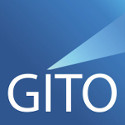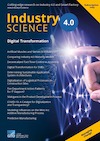Search


Bibtex
Cite as text
@Article{Lick+Wegel+Kühn,
Cite-key = "Lick2023Met",
Year= "2023",
Number= "1",
Volume= "Industry 4.0 Science 39",
Pages= "106-113",
Journal = "Industry 4.0 Science",
Title= "Methods for Designing Enterprise Architecture in Manufacturing Companies - EAM as Enabler for the Design of Transferable AI Solutions",
Author= "Jonas Lick, Arthur Wegel and Arno Kühn, Fraunhofer IEM, Paderborn",
Doi= "https://doi.org/10.30844/I4SE.23.1.106",
Abstract= "A study by the German Academy of Science and Engineering (acatech) indicates that artificial intelligence (AI) is of growing importance for the success of manufacturing companies [1]. The emerging, data-driven solutions
in the manufacturing field are highly diverse, both in terms of the processes and the locations (different factories, factory sub-areas, etc.) where these solutions are implemented. Often the solutions are also hardly scaled beyond the limits defined in the pilot project. When such an AI project ends, the goals of a use case are fulfilled, but this often results in another isolated solution being added to the company’s established IT system landscape.
The data this solution delivers is not further used, and complex maintenance requirements negate any gains in efficiency.",
Keywords= "enterprise architecture management, EAM, artificial intelligence, AI, transferability of
AI solutions, transferable AI solutions, transferable AI, IT system landscape, IT landscape, data management",
}
Jonas Lick, Arthur Wegel and Arno Kühn, Fraunhofer IEM, Paderborn(2023): Methods for Designing Enterprise Architecture in Manufacturing Companies - EAM as Enabler for the Design of Transferable AI Solutions. Industry 4.0 Science 391(2023), S. 106-113. Online: https://doi.org/10.30844/I4SE.23.1.106 (Abgerufen 29.12.25)
Open Access
Abstract
Abstract
A study by the German Academy of Science and Engineering (acatech) indicates that artificial intelligence (AI) is of growing importance for the success of manufacturing companies [1]. The emerging, data-driven solutions in the manufacturing field are highly diverse, both in terms of the processes and the locations (different factories, factory sub-areas, etc.) where these solutions are implemented. Often the solutions are also hardly scaled beyond the limits defined in the pilot project. When such an AI project ends, the goals of a use case are fulfilled, but this often results in another isolated solution being added to the company’s established IT system landscape. The data this solution delivers is not further used, and complex maintenance requirements negate any gains in efficiency.
Keywords
Schlüsselwörter
enterprise architecture management, EAM, artificial intelligence, AI, transferability of AI solutions, transferable AI solutions, transferable AI, IT system landscape, IT landscape, data management
References
Referenzen
[1] BITKOM-Verband: Leitfaden – Künstliche Intelligenz verstehen als Automation des Entscheidens. URL: www.bitkom.org/sites/default/files/file/import/Bitkom-Leitfaden-KI-verstehen-als-Automation-des-Entscheidens-2-Mai-2017.pdf, Abrufdatum 20.10.2022.
[2] acatech – Deutsche Akademie der Technikwissenschaften; Plattform Lernende Systeme: Leitfaden – Führung im Wandel: Herausforderungen und Chancen durch KI. URL: www.plattform-lernende-systeme.de/files/Downloads/Publikationen/AG2_WP_Fuehrung_im_Wandel.pdf, accessed Oct 20, 2022.[3] Lankhorst, M.: Enterprise Architecture at Work – Modelling, Communication and Analysis, 4th edition. Enschede Berlin 2017.
[4] The Open Group: Directory of Certified People. URL: togaf9-cert.opengroup.org/certified-individuals, accessed Oct 20, 2022.
[5] The Open Group: TOGAF Standard 10, Chapter 1: Architecture Development Method (ADM). URL: pubs.opengroup.org/togaf-standard/adm/chap01.html, accessed Oct 20, 2022.
[6] The Open Group: TOGAF Standard 10, A Practitioners’ Approach to Developing Enterprise Architecture Following the TOGAF®ADM. URL: pubs.opengroup.org/togaf-standard/adm-practitioners/adm-practitioners_5.html#_Toc95288825, accessed Oct 20, 2022.
[7] The Open Group: TOGAF Standard 10, Chapter 2: Architecture Content. URL: pubs.opengroup.org/togaf-standard/architecture-content/chap02.html#tag_02, accessed Oct 20, 2022.[8] The Open Group: TOGAF Standard 10, Chapter 3: Introduction and Core Concepts. URL: pubs.opengroup.org/togaf-standard/introduction/chap03.html#tag_03, accessed Oct 20, 2022.
[9] The Open Group: ArchiMate 3.1 Specification, Kapitel: Generic Metamodel. URL: pubs.opengroup.org/architecture/archimate3-doc/chap04.html, accessed Oct 20, 2022.
[10] Farwick, M.; Hauder, M.; Roth, S.; Matthes, F.; Breu, R.: Enterprise Architecture Documentation: Empirical Analysis of Information Sources for Automation. In: Hawaii International Conference on System Sciences (HICSS 46). Maui, Hawaii 2013.
[11] Kreikebaum, H.; Gilbert, D. U.; Behnam, M.: Strategisches Management. Stuttgart 2011.
[12] Innovator: ArchiMate®-Spezifikation der The Open Group. URL: help.innovator.de/Enterprise/de-de/Content/InoConf/ArchiMate_TOGAF_Specification.htm, accessed Oct 20, 2022.

 English
English